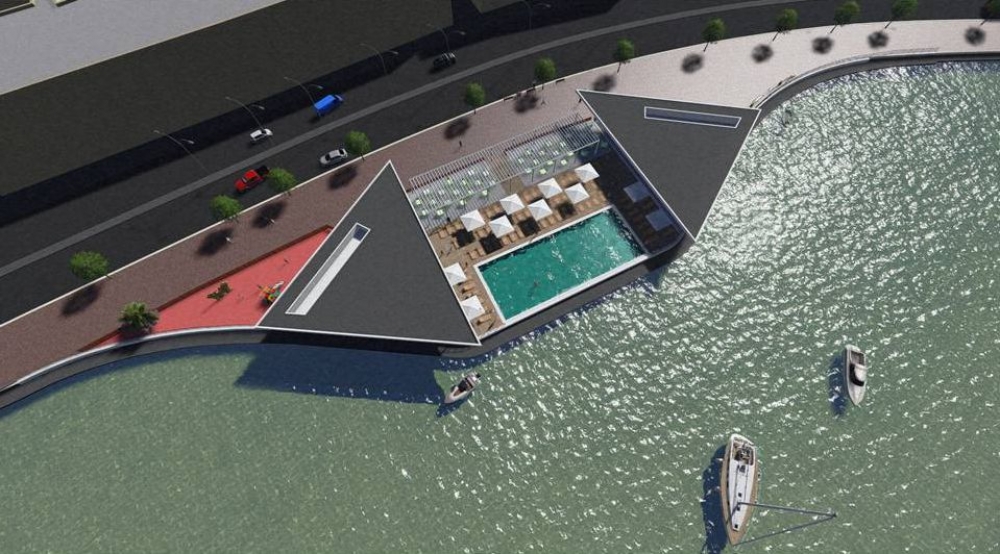Developers rejoiced in 2016 thanks to the Planning Authority’s generosity
These are the 10 most controversial permits issued in 2016

After controversy and protests against the proposed university campus at Zonqor Point, the government has been reluctant on pushing major projects outside development zones. But the pressure on town centres has continued unabated, alongside the mushrooming of small-scale developments interspersed in the countryside thanks to policies approved in the past years.
These are the 10 most controversial permits issued in 2016.
38-storey tower in Sliema proposed by the Gasan Group

Not only will the tower change the landscape but also noise for residents during 10 months of excavations will exceed 96 decibels – a level considered to be substantial. 28 trucks will be wending their way every day through Sliema streets. Construction is expected to take four years. The permit is awaiting a final verdict by the Tribunal for Environmental and Planning Review, following appeals by NGOs, the local council and the Environment and Resources Authority.
Mriehel Towers proposed by the Gasan and Tumas groups

The project consists of four cylindrical tower blocks, comprising 16, 17, 19 and 14 storeys, sitting on top of five basement levels. The project was approved despite evidence that photomontages published in the EIA were taken by wide angle, thus minimizing the impact of buildings on landscape.
Heart-shaped extension of the Ramla Bay Hotel proposed by Holden Group, a company owned by Tarcisio Galea Group of Companies

The application increases the massing of the existing hotel by replacing 45 apartments with 100 apartments through a heart shaped seven-storey block of high apartments, three restaurants, a nightclub and a bar. The visual impact of the project (which will dominate views from the Gozo ferry terminal) was defended by the architect of the project, Ray Demicoli, recently appointed as a member of the PA’s Design Advisory Committee, who insisted that the curves of the project integrate well with the “natural context of sea and rocky shore”.
Demolition of Art deco house in Qui si-Sana

The demolition will make way for 15 flats, two overlying penthouses and 57 car spaces. “These houses are as important to Sliema as Siculo-Norman architecture is to Mdina,” conservation architect Edward Said said. NGOs have appealed against this decision.
ODZ villa instead of a pile of rubble at Tal-Fata in Zabbar

The 1947 electoral register was submitted as the definitive proof that a building abandoned 38 years ago, was once used as a residence. Roofless and long-abandoned countryside ruins can be transformed into villas – thanks to the controversial Rural Policy in Design Guidelines approved in 2014. All that an owner has to do is prove that the structures had served as a dwelling in the past. Moreover, according to the policy, any building constructed before 1978 is considered as legal. Therefore any ruin of such buildings may now be reconstructed.
Villa in leafy Palma, Mgarr
A 200 square metre villa approved in the leafy Palma area of Mgarr on the pretext of a contract inked back in 1915. The lease contract signed 100 years ago refers to someone living in “five rooms” in the Palma area, and thanks to the controversial Rural Policy in Design Guidelines, will allow the derelict countryside ruins to be transformed into the villa. A 112 square metre paved area will also surround the residence.
Gzira promenade lido

A 2,200 sq.m lido along the promenade of Triq ix-Xatt in Gzira, which will include land reclamation, will also involve the development and construction of an outdoor swimming pool, a sundeck area, two restaurants, changing rooms and toilet facilities and a recreational play area for public use. Access to the coastline will be limited to a two-metre passage passing along the perimeter of the development. During the meeting ERA chairman Victor Axiak had warned that the project would create a precedent for similar developments. In November new plans were presented for a similar development on reclaimed land opposite the Black Gold Restaurant.
Sliema six-storey pencil development on top of 19th century townhouse
The development, on the corner between the Sliema strand and St Vincent Street, was recommended for refusal by the Planning Authority case officer, the Sanitary Officer and the PA Cultural Heritage Officer. The main reason for the recommendation for refusal was Malta’s sanitary law which has always sought to limit the height of buildings in narrow streets in order to ensure minimal standards of light and air to surrounding homes.
Five-storey block in Lija’s villa area
27 apartments in a five-storey apartment block in a quiet area currently characterised by low-lying villas in Lija. The proposed block is in the heart of a residential Lija street bordering Balzan, characterised by lines of uniform terraced houses and opposite a designated villa and bungalow area, with no existing buildings higher than two storeys.
12-storey Xemxija block

A huge 12 storey high 103-apartment block on Xemxija Hill instead of an old townhouse. The case officer claimed that the 12-storey building respects the four-floor height limitation of the area because of the terraced nature of the development and the different street levels. The development completes a process commenced in the 1990s, which has irremediably changed Xemxija into a hotchpotch of apartment blocks.






.jpg)















